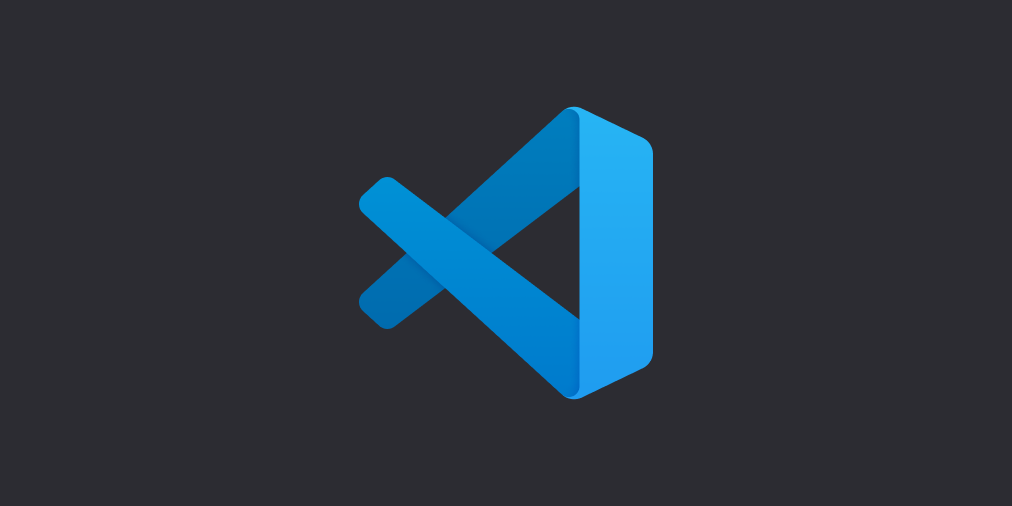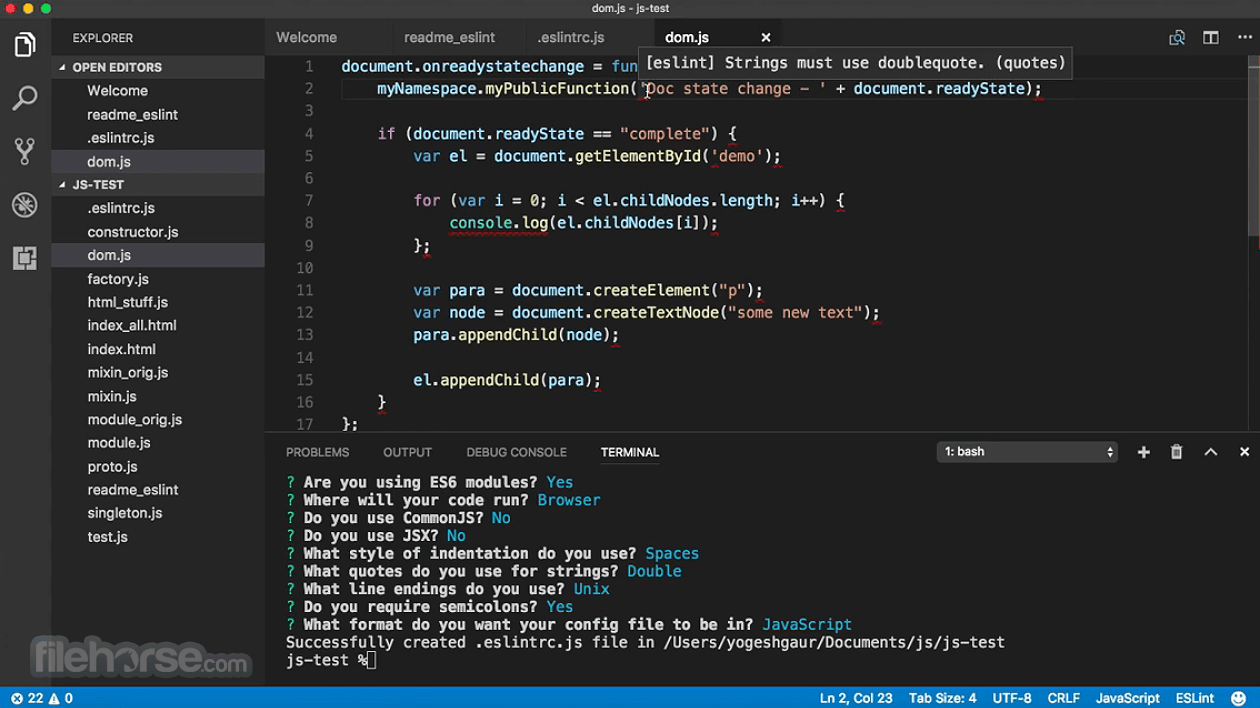Next Steps: Debugging using Visual Studio Code Naturally, the next step would be to debug in real-time and connect to the J-Link interface on the development kit, all in Visual Studio Code. If you’re interested in learning more about how to set up real-time debugging in VS Code, in addition to a complete video tutorial covering all the steps.
- To make this change persist after restart on MacOS. Many Mac users find this is forgotten and needs to be re-applied after any restart. This may happen if MacOS has applied the quarantine attribute to VS Code, which the OS uses for the 'Are you sure?'
- Extension for Visual Studio Code - macOS Classic. Launch VS Code Quick Open (Ctrl+P), paste the following command, and press enter.
Wavepad 2020. To start developing native, cross-platform .NET apps on macOS, install Visual Studio 2019 for Mac following the steps below.
Requirements
- A Mac with macOS High Sierra 10.13 or above.
To build Xamarin apps for iOS or macOS, you'll also need:
Macos Visual Studio Code Permission Denied
- A Mac that is compatible with the latest version of Xcode. See Apple's minimum requirements documentation
- The latest version of Xcode. It may be possible to use an older version of Xcode if your Mac is not compatible with the latest version.
- An Apple ID. If you don't have an Apple ID already you can create a new one at https://appleid.apple.com. It's necessary to have an Apple ID for installing and signing into Xcode.

Installation instructions
Download the installer from the Visual Studio for Mac download page.
Once the download is complete, click the VisualStudioforMacInstaller.dmg to mount the installer, then run it by double-clicking the arrow logo:
You may be presented with a warning about the application being downloaded from the Internet. Click Open.
Wait while the installer checks your system:
An alert will appear asking you to acknowledge the privacy and license terms. Follow the links to read them, then press Continue if you agree:
The list of available workloads is displayed. Select the components you wish to use:
If you do not wish to install all platforms, use the guide below to help you decide which platforms to install:
Type of App Target Selection Notes Apps Using Xamarin Xamarin.Forms Select Android and iOS platforms You will need to install Xcode iOS only Select iOS platform You will need to install Xcode Android only Select Android platform Note that you should also select the relevant dependencies Mac only Select macOS (Cocoa) platform You will need to install Xcode .NET Core applications Select .NET Core platform. ASP.NET Core Web Applications Select .NET Core platform. Azure Functions Select .NET Core platform. Cross-platform Unity Game Development No additional platforms need to be installed beyond Visual Studio for Mac. Refer to the Unity setup guide for more information on installing the Unity extension. After you have made your selections, press the Install button.
The installer will display progress as it downloads and installs Visual Studio for Mac and the selected workloads. You will be prompted to enter your password to grant the privileges necessary for installation.:
Once installed, Visual Studio for Mac will prompt you to personalize your installation by signing in and selecting the key bindings that you'd like to use:
If you have network trouble while installing in a corporate environment, review the installing behind a firewall or proxy instructions. Google cast for mac download.
Learn more about the changes in the release notes.
Note
If you chose not to install a platform or tool during the original installation (by unselecting it in step #6), you must run the installer again if you wish to add the components later.
Install Visual Studio for Mac behind a firewall or proxy server
To install Visual Studio for Mac behind a firewall, certain endpoints must be made accessible in order to allow downloads of the required tools and updates for your software.
Configure your network to allow access to the following locations:
Next steps
Installing Visual Studio for Mac allows you to start writing code for your apps. The following guides are provided to guide you through the next steps of writing and deploying your projects.
iOS
- Device Provisioning(To run your application on device).
Android
Xamarin.Forms
Build native cross-platform applications with Xamarin.Forms:
.NET Core apps, ASP.NET Core web apps, Unity game development
For other Workloads, refer to the Workloads page.
Related Video
See also
I helped track down the misbehaving macOS compatibility patch that broke native tabs support in VS Code. I also learned to avoid introducing new bugs in bugfixes.
Introduction
After writing the AppKit Bundle ID post, a Visual Studio Code developer reached out to me about one misbehaving bundle ID check.
VSCode, it turns out, couldn’t display native macOS tabs on High Sierra: after selecting Window->Merge Window, there should be a tab bar at the top of the window:
But on High Sierra, the bar is completely empty:
(screenshot by @ddotlic)
The VS Code developers realized the issue only happens if the bundle ID begins with com.microsoft. Changing the bundle ID to com.microsoft2.VSCode fixes it.
This definitely sounds like a misbehaving compatibility patch, since it’s only applied to specific bundle IDs. But which one? And how can we disable it?
Narrowing down the issue
I was able to reproduce the issue, and confirmed that changing the bundle ID fixes it.
I then started looking for the misbehaving patch. I found the “com.microsoft.” text when running strings on AppKit: so it’s checking it somewhere. However, IDA Free’s “Xref” command showed multiple method all checking for com.microsoft. as a bundle prefix. Thus, I had to manually find which method is actually responsible for the bug.
My first approach was to attach a debugger to VS Code, and examine every access to the main bundle of the app.
All accesses to the main bundle, including Cocoa’s +[NSBundle mainBundle] and Carbon’s various methods, eventually uses CFBundleGetMainBundle(). I thought putting a breakpoint on this method would allow me to find every place that checks for bundle IDs.
When I ran the app, I was greeted with a flood of calls, too many to analyze. I should’ve known: an app needs its main bundle for many reasons: for example, getting resources. There’s no easy way to limit this breakpoint to the calls getting just the bundle ID.
Dyld injection and swizzling
I decided instead to override -[NSBundle bundleIdentifier] such that, if the original return value is “com.microsoft.VSCodeInsiders”, I return a non-Microsoft bundle ID. If this fixes the bug, then I’ll know that the broken code uses -[NSBundle bundleIdentifier], not CoreFoundation or any other bundle API.
To override an Objective-C method, I followed New Relic’s tutorial for method swizzling. I look up the original Method on the NSBundle class, save the original implementation in a function pointer, and substitute my own implementation. When my method is called, I forward it to the original code, and change the return value if needed.
Macos Visual Studio Code From Terminal
To load my code into VS Code, I used the DYLD_INSERT_LIBRARIES environmental variable, which specifies a shared library to load into the process at launch. (It’s similar to LD_PRELOAD on Linux.) While there are better ways to get code to run once inserted, I chose to use a constructor function because I wanted to try it.
My initial test code is shown below:
and the result?
Yep, the tab bar is working. So I know the issue is caused by some code calling -[NSBundle bundleIdentifier]. Now to find which one.
Isolating the method
I need to find which method is calling us to obtain the main bundle ID. A StackOverflow guide told me to use the +[NSThread callStackSymbols] method, which returns an Array of all the method names in the call stack. We’re on the top of the call stack, so the method that called us must be at position [1] of that array.
Compatibility flags are calculated with code that have names ending with DefaultValueFunction. So I tried only overriding the bundle ID if the calling function’s name contains DefaultValueFunction.
Yep, the tab bar function is still fixed. So it’s one of the compatibility calls. But which one?
I decided to use binary search to eliminate half the candidate functions each time.
I first logged the names of all the DefaultValueFunctions that got the main bundle ID, and put them into an Array.
Next, I made my hook only return an overridden bundle ID if the method’s name is in my list.
Finally, I comment out half of the list at a time. If the tabs still work, then the method that checks the bundle ID is in the uncommented half. If the tabs broke, then the method is in the commented half.
Eliminate the wrong half, and eepeat until all but one method is commented out.
Here’s my code:
Using this, I was able to isolate the method: NSUseImprovedLayoutPassDefaultValueFunction.
Examining the method
Disassembling the method in IDA Free reveals that it does check for bundle IDs beginning with com.microsoft..
This method returns true normally, but returns false if an app needs the old behaviour. However, like most compatibility patches, this value can be overridden by setting the relevant variable, NSUseImprovedLayoutPass, through NSUserDefaults, macOS’s preference system.
An NSUserDefaults value can be set temporarily by passing it on the command line. So I launched VS Code with NSUseImprovedLayoutPass temporarily set to true:
And the tabs worked without changing the bundle ID.
Making the pull request
So all I had to do was to set this option in VS Code, and the tabs should be fixed.
There are two ways to set an NSUserDefaults value in code: setBool:forKey sets it permanently, while registerDefaults sets it temporarily until the program exits.
Electron exposes both methods: I decided to use the temporary method for this override since it seemed cleaner to me, so all I had to do was call
before any windows are created, and native tabs worked in VS Code.
I quickly sent a Pull Request to the VS Code GitHub repository.

An ironic code review
Unlike my previous attempt to submit pull requests to VS Code, I got a code review almost immediately - and found out I made an ironic mistake.
My fix enables the workaround for all Mac users, not just the minority that use Native Tabs support. This makes it much more likely to break something unintentionally. The workaround isn’t specifically restricted to those with the issue - just like how Apple’s original patch broke VS Code by not being specific enough when targeting the bundle ID.
To avoid introducing new bugs, the VS Code developer changed the patch to only set the override when it’s needed. (and also switched to setUserDefault since Electron 1.7.x didn’t have registerDefaults.).
So while my original pull request wasn’t up to VS Code’s standards, I now know what to do in the future to avoid introducing new bugs.
What I learned
- Overriding methods is easy with macOS and Objective-C
- When making a change, be as specific as possible to minimize side effects
- Try to fix issues without creating more bugs

Comments are closed.